The Investigation and Research of the Performance Appraisal of R&D Personnel in R Company
Cui Yuxue,Chen Jing,Chen Jing
(School of Business Administration,Shenyang Pharmaceutical University,Shenyang 110016,China)
Abstract Objective To improve the creativity and enthusiasm of R&D personnel in R Company.Methods The status quo of the performance assessment of R&D personnel in R Company was studied through questionnaire and interview survey.Factor analysis and multiple linear regression method were used to find out the core factors affecting the expectation of employee performance optimization,and the regression equation of employee performance optimization was established.Results and Conclusion R&D personnel in R Company have low satisfaction with the current performance appraisal and strong self-actualization needs,so they expect to optimize the performance appraisal.The objectives and key results (OKR),a management goal-setting system,can make up the deficiencies of R&D personnel’s current performance assessment in R Company,which meets their self-realization needs to a greater extent,thus stimulating their productivity.
Keywords:R Company;R&D personnel;performance appraisal;OKR
With the rapid development of global economy,China’s pharmaceutical innovation ability is facing great challenges.As the core of enterprises,R&D personnel is of great significance to improve the innovation ability of pharmaceutical enterprises.A well-designed performance appraisal plays an important role in motivating R&D personnel’s enthusiasm and creativity.At present,many scholars in China have made researches on the performance appraisal of R&D personnel from different aspects,such as the selection of performance appraisal indicators,the determination of index weights,and assessment methods.For example,Du Ningrang,et al.(2014) designed a performance management system,including performance evaluation system and performance incentive mechanism,suitable for researchers in large enterprises by analyzing the current situation and the problems of performance management problems of researchers in large enterprises[1].Zhang Hongwei (2019) analyzed the current situation of performance appraisal of R&D talents in a tourism enterprise.Then,based on the original key performance indicator (KPI)performance appraisal,he introduced objectives and key results (OKR) target management system to optimize various steps and processes of its performance appraisal system[2].However,few domestic scholars study the performance appraisal of R&D personnel in pharmaceutical enterprises.In this paper,R pharmaceutical company is taken as an example,and its R&D personnel’s performance appraisal survey is conducted.Finally,some corresponding suggestions are put forward based on the survey status and combined with OKR target management system.
1 Origin and development of OKR
1.1 Origin of OKR
OKR is a management tool and method for defining and tracking objectives and their completion.Besides,it is a performance management system[3].OKR originated from management by objectives(MBO) by Peter Drucker.In 1976,Andy Grove introduced MBO into Intel as a key component of the company’s management philosophy.And he modified the model slightly.Since then,OKR has stepped onto the historical stage.The characteristics of objectives(O) are:clear direction,inspiring,time-limited,and completing the objective by an independent team.Key results (KR) are characterized by being quantifiable,ambitious,easy to track progress,and the designer has full autonomy.
1.2 Development of OKR in foreign countries
Shortly after Google was founded,John-Doerr (who served as the Vice President of Intel)first introduced OKR system to Google.It was not until 2013 that Rick Crowe,a partner of Google ventures,released a video about OKR.From then on,OKR has become popular all over the world.Then OKR flourished in Google and has been in use ever since.The successful practice of OKR in Google has gradually attracted the attention of some internationally renowned enterprises,such as Microsoft,General Electric,LinkedIn,and Xingjia.They began to learn from it.With the development of OKR,foreign scholars have started to study other aspects of OKR.Klanwaree and Choemprayong(2019) began to study the feasibility of adopting OKR for active knowledge sharing in information technology consulting organizations[4].In recent years,the number of OKR users abroad has increased a lot,and there are more OKR objective setting software.For instance,Weekdone can not only set structured objectives for coordinating the activities of the whole organization,but also track the weekly progress and provide feedback.The Lifetick can achieve the target of SMART (S=specific,M=measurable,A=attentive,R=relevant,T=time-bound) in a variety of ways.Besides,it can also accurately and effectively insight into employees’ aspirations and frustrations.
As shown in Fig.1,the cumulative amount of foreign language-related literature on two keywords,OKR and performance management,has changed with time.Before 2015,the academic attention of OKR in foreign countries basically did not change much,but from 2016,its academic attention has changed greatly.This shows that OKR,a performance management system,has been gradually recognized since 2016 after practice.
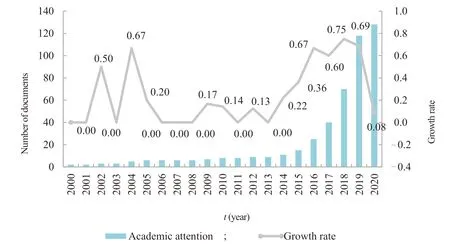
Fig.1 Changes of OKR foreign literature
1.3 Development of OKR in China
In 2013,OKR was introduced to China,and Baidu and Snap Pea began to use this performance management system[5].At present,OKR has been applied in mining,telecommunications,publishing,Internet,software development,insurance electronic product research and development,helicopter research and other industries.Meanwhile,hospitals,universities,trade unions of state-owned enterprises,social work service agencies and other public departments have also begun to apply OKR[6].Although OKR is both applied in Huawei and Byte Dance,they practice in different ways.For Huawei,the company has ten tasks for its employees each year,and employees have the right to choose the one they are most interested in,which is based on the independent choice of employees when meeting the needs of the organization.As for the remaining tasks,the company adopts the rotation system to distribute them,which will reduce the complaints of employees.For Byte Dance,the company stipulates that its employees must finish one task a year,but the superior does not specify what the task is.Employees can conceive and do it by themselves.If they succeed,they will continue to do another one.By contrast,employees in Byte Dance have better ability to work independently.
In recent years,the success of OKR practice in domestic enterprises has made the popularity of OKR research increase year by year.According to Baidu index,after OKR was introduced to China in 2013,the index was below 500 with low attention.In 2014,the attention of OKR gradually increased.As of July 2020,the index exceeded 3279,reaching the highest level in history.
Since 2011,the academic attention to OKR in China has been on the rise.Fig.2 shows that scholars pay more attention to the application of OKR and the problems of performance appraisal in China.In the past six years from 2014 to December 2020,there were 174 related documents,and the research gradually expanded from the Internet industry to insurance,universities,banks,and property,indicating that all trades and professions are trying to apply OKR.
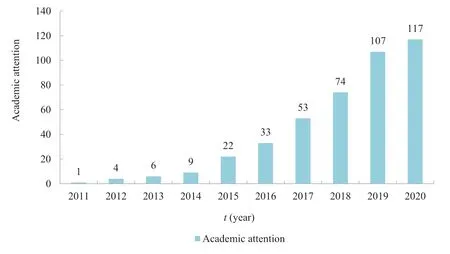
Fig.2 Cumulative amount of OKR related Chinese literature
2 Investigation and research on performance appraisal of R&D personnel in R Company
2.1 Survey object and overall design of questionnaire
Zhu Quan (2015) designed a questionnaire with three dimensions for employees’ performance appraisal in LU Company,including appraisal system identification,performance target communication and performance result incentive[7].Xu Bing,et al.(2015) designed a questionnaire on ten aspects of performance management satisfaction according to the actual performance management in hospitals,including the formulation of performance management system,the implementation of performance appraisal,performance feedback guidance,performance rewards,and punishments,etc.[8].Based on the above research experience,this survey adopts a combination of questionnaire and interview survey.The survey targets are some managers,all R&D personnel and project leaders of R Company.The questionnaire is conducted online,and it is processed into QR code.Respondents fill out their answers online.The questionnaire consists of 16 single-choice questions and one question and answer.Among them,the first 4 questions are the basic survey data,and the questions 5-11 are the variables that affect the performance appraisal expectations,involving goal setting,appraisal guidance,appraisal rationality,satisfaction with the application of results,high innovation,awareness of self-realization,and difficulty in setting goals.Questions 12-16 mainly investigate the R&D personnel’s high expectations for the optimization of the company’s performance appraisal,involving selfcontrol,teamwork,goal setting,communication,and openness and transparency of the appraisal.Question 5 to question 16 are scale questions and the score is set from one to five each.Interviews are conducted by telephone.Finally,SPSS25.0 and Excel are used to process the data.
2.2 Sample distribution and recovery
A total of 250 questionnaires were distributed and 244 were recovered,of which 220 were valid,and the effective rate of the questionnaire was 88%.Table 1 shows the sample characteristics of respondents.
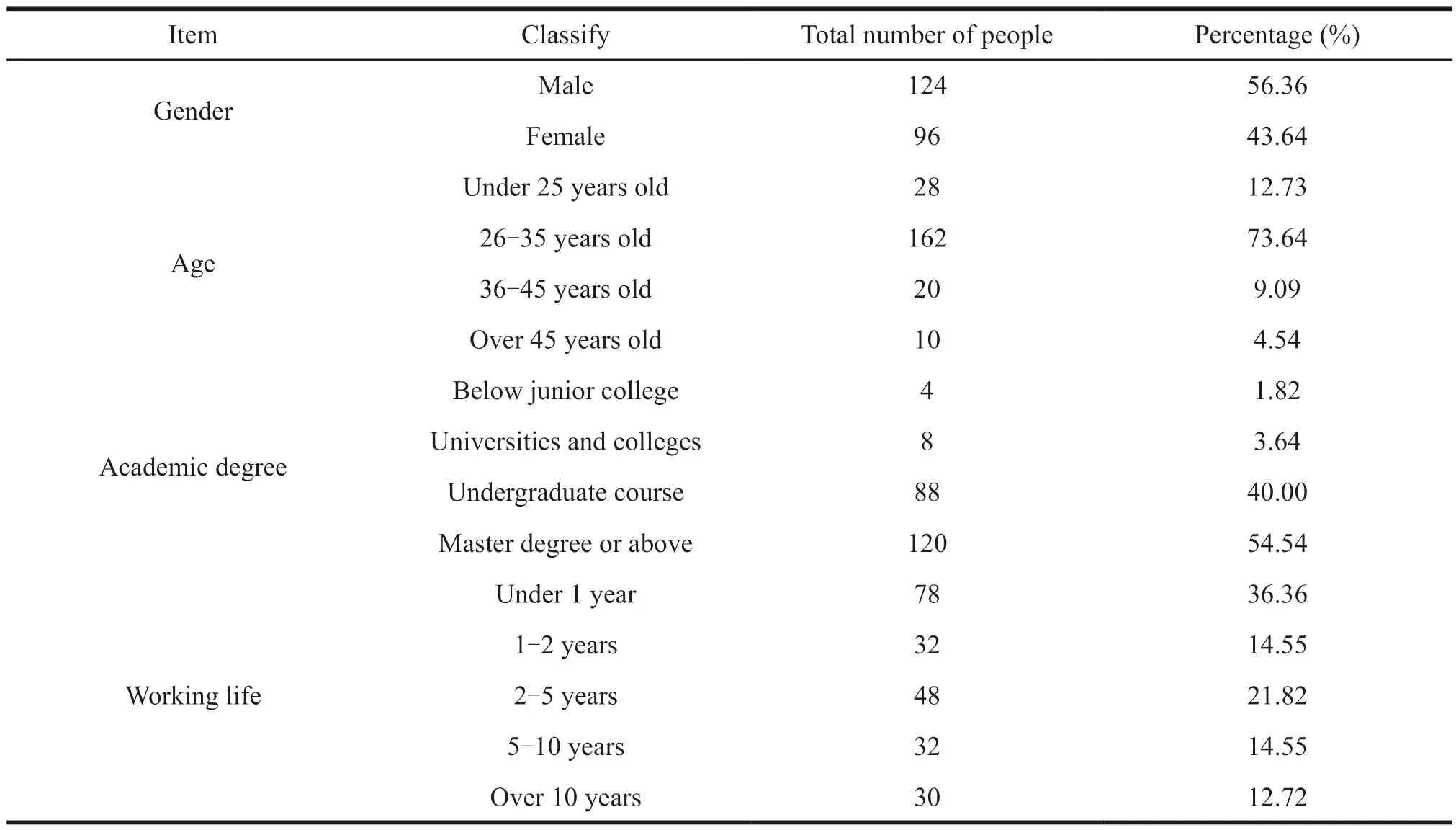
Table 1 Sample characteristics
2.3 Reliability test
In this study,Cronbach’sαcoefficient is used as the index of the reliability of questionnaire.Cronbach’sαvalue of all tested items is 0.911,which shows that the variables measured by the questionnaire have high consistency and reliability.
2.4 Analysis process of factors affecting the expectation of optimizing employee performance appraisal
Analysis is carried out on seven factors that influence the expectation of optimizing employees’performance appraisal.They are the consistency between performance goals and strategic goals(X1),effectiveness of performance guidance (X2),objectivity of performance appraisal (X3),timeliness of performance feedback (X4),high innovation ability(X5),importance of self-realization (X6),and setting of challenging goals (X7).
2.4.1 KMO and Bartlett’s test of sphericity
KMO and Bartlett’s test of sphericity are carried out on questions 5-11 of the questionnaire to test whether factor analysis can be conducted.Table 2 shows that the KMO value of the questionnaire is 0.755,which is greater than 0.7.Besides,the significance of Bartlett’s test of sphericity is 0.000,which is less than 0.01,indicating that the validity of the questionnaire is suitable to be measured by factor analysis.

Table 2 KMO and Bartlett’ test results
2.4.2 Analysis of eigenvalue and variance contribution rate
Through principal component analysis,two common factors,F1 andF2,can be extracted by using eigenvalue greater than 1 as the standard,as shown in Table 3.The contribution rate of common factor indicates that the factor reflects the information amount of original variables,and the cumulative contribution rate indicates that several corresponding common factors reflect the information amount of original variables.From Table 4,it can be seen that the first two common factors explain 77.093% of the original variables,which better reflect the original variables.The first common factor,F1,explains 44.016% of the original variables,making a good contribution
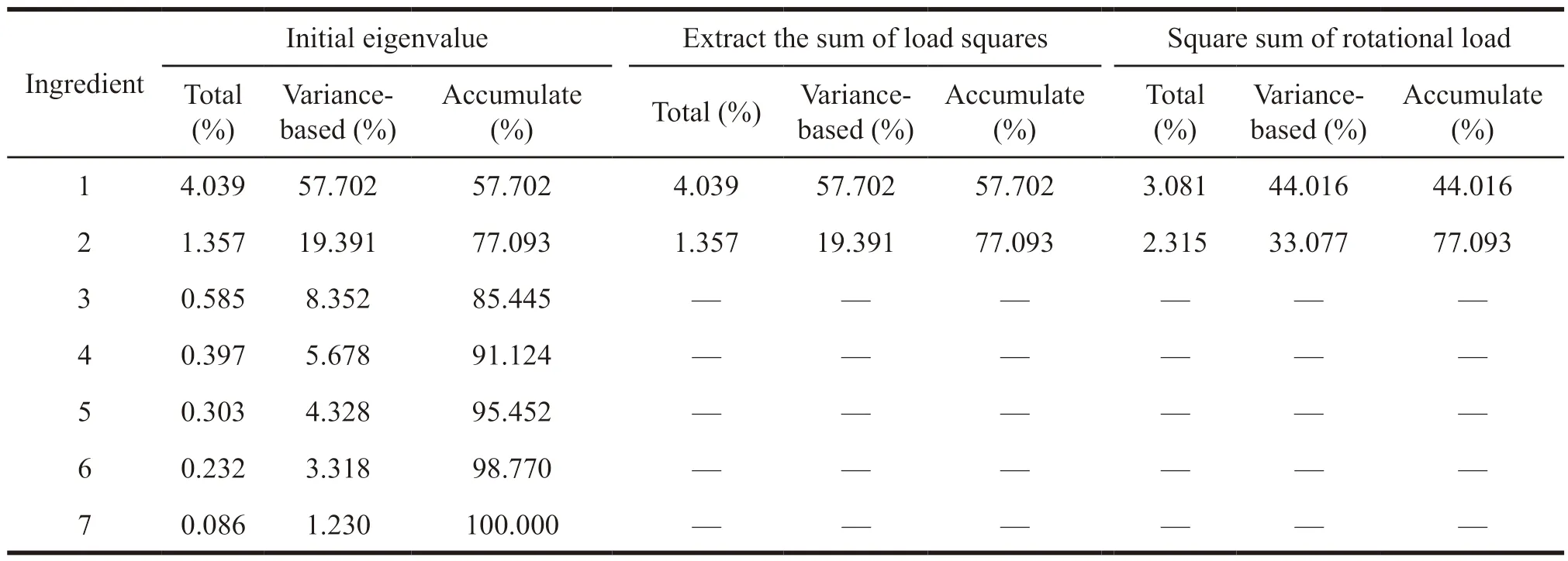
Table 3 Contribution rate of eigenvalue and variance
2.4.3 Factor analysis rotation
The initial factor load matrix is rotated by the maximum variance method in orthogonal rotation,and the results are shown in Table 4.It can be seen that the factor load ofF1 onX1,X2,X3,andX4 is higher (all over 0.8).These four factors are related to the satisfaction of performance appraisal,soF1 is named as the satisfaction factor of performance appraisal.The load ofF2 onX5,X6,andX7 is higher (all over 0.7),and these three factors are related to self-actualization demand,soF2 is named as self-actualization demand factor.
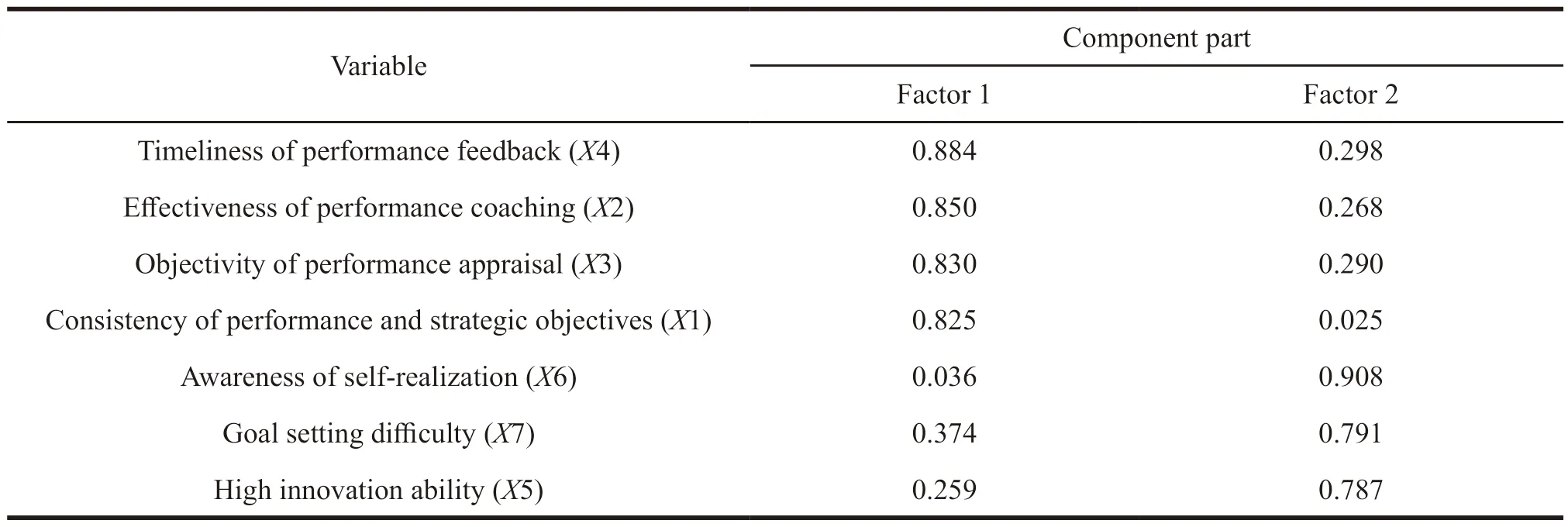
Table 4 Factor load matrix after rotation
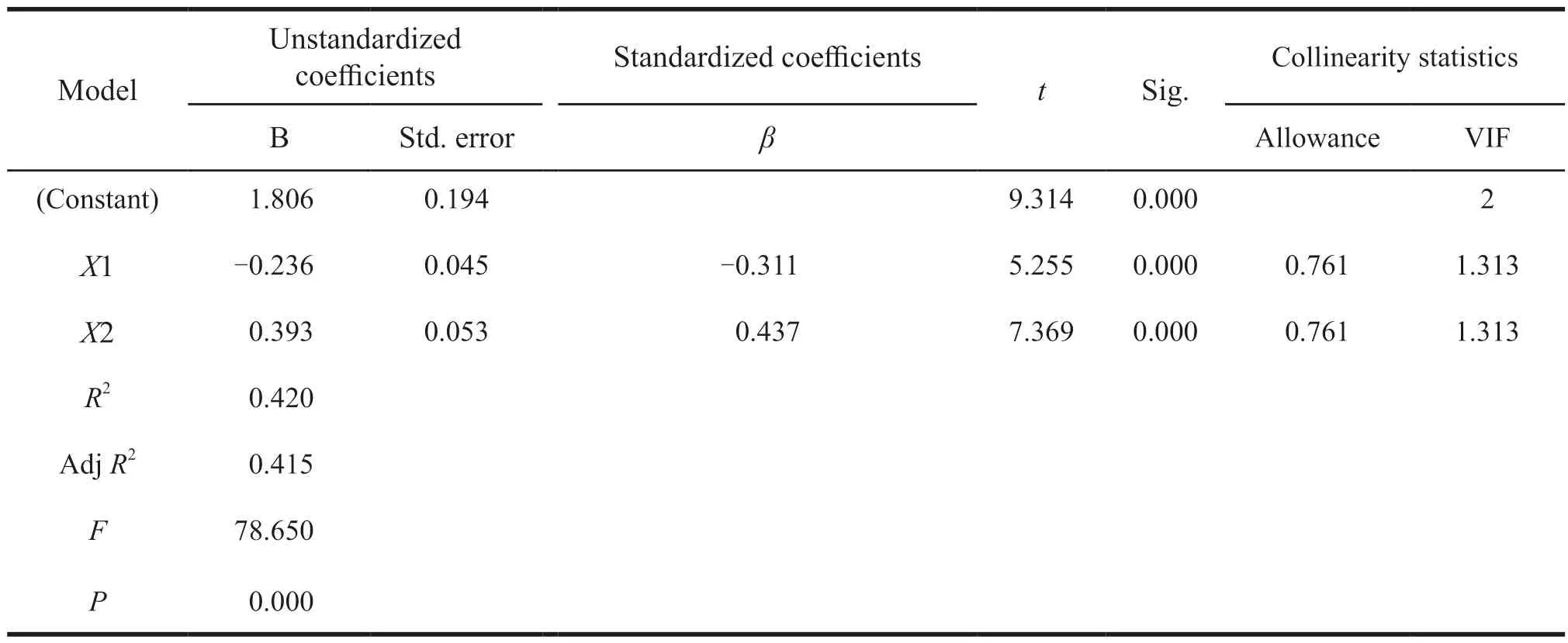
Table 5 Linear regression results
2.4.4 Multiple linear regression of factors influencing the expectation optimizing performance appraisal
The following regression model is established with the mean value of the expectation optimizing performance appraisal as dependent variable andF1(X1) andF2 (X2) as independent variables.

Yrepresents the average expected value of optimizing performance appraisal,X1 andX2 are employee’s satisfaction and self-realization needs of performance appraisal respectively.a1 and a2 are coefficients,and a represents constant items.
Table 5 shows the linear regression results,in whichR2is 0.420.The adjustedR2is 0.415,which means that the independent variablesX1 andX2 can explain 41.5% of the dependent variable changes.It means 41.5% of the expectationYof optimizing performance appraisal is influenced by employee’s satisfactionX1 and self-fulfilling demandX2.WhenF=78.650,andP=0.000 <0.05,the regression model is significant.Therefore,at least one of the two independent variables in the model significantly affects the dependent variableY.X1 can negatively affectY,and its regression coefficient is -0.236.WhenP=0.000 <0.05,it means that employee’s satisfactionX1 decreases by 1,and the expectationYof optimizing performance appraisal increases by 0.238.X2 can significantly and positively affectY,and the regression coefficient ofX2 is 0.393.WhenP=0.000 <0.05,it means that the self-realization demandX2 is increased by 1,and the expectationYof optimizing performance appraisal is increased by 0.238.In addition,VIF <5 indicates that there is no multicollinearity between the two independent variables.Based on the above analysis,the regression equation between independent variable and dependent variable isY=1.806 -0.236X1+0.393X2.
2.5 Survey result
The main purpose of the questionnaire is to investigate the R&D personnel’s satisfaction with the current performance appraisal,the intensity of selfrealization needs and the employees’ expectation of optimizing performance appraisal in R Company so as to find out the problems in R Company’s R&D personnel’s performance appraisal and solve them.
2.5.1 Respondents’ satisfaction with each link of R Company’s performance appraisal
Question 5 is whether the company’s performance objectives are consistent with the company’s strategic objectives.Only 10.2% of the respondents agree that the company’s performance objectives are consistent with its strategic objectives,while 40.37% of the respondents are dissatisfied,indicating that the consistency between performance objectives and strategic objectives of the company has not been recognized by most employees.
Question 6 is whether employees get effective training and counseling during the implementation of the plan.Only 16.8% of the respondents are satisfied,while 37.86% of the respondents are not satisfied with the practice of R Company,indicating that R Company does not provide effective training and counseling to most employees while implementing the performance appraisal.
For question 7,only 20.63% of the respondents are satisfied with the objectivity of the performance appraisal in the company,while 50.3% of the respondents are dissatisfied,indicating that the objectivity of R Company’s performance appraisal needs to be further improved.
For question 8,only 30.69% of the respondents are satisfied with the R&D personnel always knowing their achievements and shortcomings after performance appraisal,while 43.5% of the respondents are not satisfied,which shows that after performance appraisal,the company fails to tell each employee the appraisal results.Therefore,the performance appraisal feedback of R Company needs to be improved.
Through the above analysis,we can see that R&D personnel are not very satisfied with each aspect of performance appraisal in R Company.We know that every link of performance appraisal is critical because they are closely linked.If any link goes wrong,it will affect the results of performance appraisal.Therefore,the respondents of R Company have a strong desire to optimize the current performance appraisal.
2.5.2 The height of self-realization needs of R Company R&D personnel
Question 9 is about R&D personnel’s innovation ability,92.73% of the respondents think that their innovation ability is still at the upper-middle level,and 7.27% of the respondents are not satisfied with their innovation ability,which shows that the R&D personnel in R Company have good overall innovation ability.Therefore,they are eager for innovation and hope to bring benefits to the company.
As to question 10,81.82% of the respondents think that self-realization is important for R&D personnel,which shows that in this era,employees are not limited to the problem of food and clothing,but hope to achieve self-realization in their own work and create more value for the company.
Question 11 is regarding to the difficulty of setting goals for R&D personnel,74.55% of the respondents still tend to set difficult goals for themselves,30.91% of the respondents want the goals set by the company to be more challenging and they are willing to accept the challenges.According to Y theory,the potential of employees in the industrial age is only realized a small part.In the era of knowledge economy,challenging goals are conducive to stimulating employees’ maximum potential.
From the above analysis,it can be seen that the innovation ability of R&D personnel in R Company is relatively good.Self-realization plays an important role in their work,and they tend to set their own challenging goals.The strong self-realization demand of R&D personnel in R Company also determines the particularity of its performance appraisal.Therefore,the performance appraisal of R&D personnel cannot be applied in other departments.It is an important task for R Company to formulate performance appraisal exclusively for its R&D personnel.
2.5.3 Employees’ expectation of optimizing performance appraisal
Question 12 is about the self-control of R&D personnel.74.55% of the respondents hope for selfcontrol,and 21.82% of them hope eagerly,which shows that R&D personnel attach great importance to self-control at work.Self-control can greatly arouse the enthusiasm of the target responsible person and help improve the adaptability of the organization system.
Question 13 is in regard to teamwork.85.45% of the respondents want teamwork,and 47.27% want the teamwork eagerly because they know that R&D is not just one person’s business,and cooperation can better promote the completion of the project.
As to question 14,85.45% of the respondents hope to set goals with their superiors,and 36.36% of them have stronger desire,which shows that R&D personnel do not want to accept tasks passively,but participate in making goals with their superiors.Setting goals together with the superiors,employees’ideas can be considered,and their sense of mission and responsibility can be enhanced at the same time.Therefore,when R Company sets its goals,it should consider the participation of employees.
Question 15 is about the regular communication between superiors and employees in the assessment process.85.45% of the respondents wish to communicate with their superiors,and 40% of them have strong desire to communicate with their superiors,indicating that employees also want to know their shortcomings,so as to make progress in the next assessment.In the process of performance appraisal,the communication between superiors and employees of R Company has to be further strengthened.
Question 16 is about the openness and transparency of the appraisal.80% of the respondents hope that the appraisal is open and transparent,and 52.73% of the respondents have a stronger desire,which shows that the openness and transparency of the performance appraisal of R Company is not good at present.The more open the performance appraisal is,the more helpful it is for employees to see the gap between themselves and others through the appraisal results,thus improving their abilities.
From the above analysis,it can be seen that R&D personnel have great expectations for optimizing R Company’s performance appraisal.They expect more work autonomy,teamwork,joint effort with superiors to set goals.Besides,they also expect superiors to communicate with them regularly during the performance appraisal process.Lastly,they require the openness and transparency of performance appraisal.
2.5.4 R&D personnel’s sense of participation
For the last question,most of the respondents put forward more or less suggestions on the performance appraisal of R Company.Some of the respondents hope that the superiors and the employees can communicate more so as to facilitate their work.Some of the respondents think that they are not valued in the company and hope that the company can pay enough attention to the R&D personnel.Answering the last question actively shows that respondents have a strong sense of participation,which is also a manifestation of strong self-realization needs.
3 The main problems revealed by the survey
3.1 The performance appraisal objectives is not in line with the company’s strategy
The goal of R Company’s performance appraisal is not in line with the company’s strategy.The questionnaire shows that only 10.2% of the respondents think that the goal of R Company’s performance is consistent with the company’s strategic goal.Through interviews,it is found there are three problems.First,the indicators of performance appraisal are not based on the company’s strategy.Most of these indicators are established from the experience and subjective judgment of superiors,which lacks scientific evidence.Second,when R Company’s goals are decomposed from top to bottom,there will be some deviations due to the influence of objective factors such as R&D personnel’s working environment,knowledge level and their experience.Therefore,the employees’ goals may not be combined into the company’s strategic goals.Third,when managers turn goals into tasks and assign them to individuals,they only pay attention to the completion of employees’ goals,but ignore the organizational goals.The goal of performance is the foundation of an effective management.Once it is separated from strategic goal,it cannot provide the required evaluation criteria,and measure employee performance objectively.
3.2 Assessment counseling is delayed or even missing
According to the survey,only 16.8% of the respondents think that they can get effective training and counseling,and their superiors do not provide timely and effective performance appraisal counseling for their employees,or even without any counseling.On the one hand,it leads to the failure of superiors to know the progress of employees’ work in time.Even if employees have problems in their work,they cannot find them and discuss them in time.Therefore,they cannot take targeted measures to correct them.It is difficult for them to achieve performance appraisal goals.On the other hand,it will cause the estrangement between employees and managers.Besides,the lack of necessary communication between superiors and employees will increase the difficulty of carrying out follow-up work.
3.3 There are subjective factors in both appraisers and performance appraisal methods
According to the survey results,50.3% of the respondents believe that R Company’s performance appraisal is subjective.Through interviews,it is found that the subjectivity is in appraisers and performance appraisal methods.When the appraiser evaluates the employee,he has a strong subjective consciousness and cannot give him/her an objective evaluation.As a result,the employee will have negative emotions,and the work efficiency will be affected.In the long run,the overall innovation of the R&D department will also be reduced.The company’s current 360-degree assessment method also has some limitations.Employees,superiors,colleagues,subordinates,customers will assess the employee.However,due to the innovation of R&D,there are few reference for evaluating the employees,so each assessment of the employee is more or less mixed with subjective factors.
3.4 Performance feedback is not timely
According to the survey,only 30.69% of the respondents think they can get timely feedback.After the interview,it is found that the late performance feedback includes the followings.First,it takes a long time to give employees a certain feedback after the assessment.Since the employees cannot know their shortcomings in a short time,their work improvement is delayed.Second,some appraisers worry that negative feedback will affect employees’ work enthusiasm,so they do not give feedback or even delay feedback to the employees,which will cause some employees unable to know their strengths and weaknesses in time.Therefore,they cannot make full use of their strengths and avoid weaknesses.
3.5 Some managers’ limited understanding of OKR
Through interviews with the managers,it is found that more than 40% of them do not fully understand OKR.Although they have heard of OKR,they cannot accurately express their understandings of OKR.Some managers think that KPI method is still applicable to the assessment of R&D personnel.However,they ignore that R&D personnel are a special group,and their work is different from the employees in other departments.Their work process is difficult to monitor,their work results cannot be measured and evaluated simply,and their working hours are difficult to control.The characters of R&D personnel determine the particularity of their performance management.Therefore,the performance management tools should be different for them.In addition,more than 50% of managers in R Company are learning OKR,and they have the idea of transferring OKR method to their original performance appraisal slowly.
4 Suggestions
To sum up,combined with the characteristics of OKR,the expectation of optimizing R&D personnel’s performance appraisal in R Company,and R&D personnel’s performance appraisal status,the following four suggestions are put forward.
4.1 The publicity and training of OKR should be done in advance
Since most employees of R Company are unfamiliar with OKR as a performance management tool,it is difficult for them to accept it in a short time.Therefore,the company needs to carry out necessary publicity and training before introducing OKR.Setting goals and key results sound simple,but the actual operation is difficult.Skyler puts forward some challenges that Fresh Works faces in implementing OKR,and it takes time for meetings,investigations and target tracking related to OKR.It is difficult to measure progress.The internal acceptance of OKR is not high.There are some difficulties in the process of continuous advancement[9].Faced with these challenges,R Company may become helpless.At this time,it can rely on the strength of external consulting companies,which will put forward some suggestions according to the characteristics of R Company.
In addition to the publicity and training,managers at all levels of R Company need to make contributions to the smooth application of OKR.Top managers pass on OKR ideas and principles to middle managers first,then middle managers teach specific tutorials closely related to their departments to grassroots managers.Finally,grass-roots managers teach employees how to set objectives and key results based on team situation or post,which can help employees implement OKR for the first time[10].The support of each manager and the implementation of OKR by employees will give them a sense of belonging and make them more closely related to the work of the company.
4.2 Introducing OKR in target setting
The first is the source of goals,which should be based on the company’s strategy.Besides,60% of the goals should be set from bottom to top.It means 60%of the goals come from the bottom,and only 40% are set from top to bottom,which is enough to improve the enthusiasm of employees.
Secondly,the target setting of R Company should include all the characteristics of “O” in OKR.The target should be clear and inspiring.The inspiring target can increase the desire of R&D personnel to have more challenges.Besides,it can stimulate the potential of R&D personnel to a greater extent and bring more benefits to R Company.Setting goals should have time limit.Goals should be carried out by independent teams.If the project is jointly undertaken by several R&D teams,when problems arise,no one will stand up and take the initiative to bear the consequences.Therefore,each team of R Company should have its goals,which should be changed from the original “I have to do the task” to “I want to do the job”.Lastly,the goals must be completed within the set time[11].
Finally,the type of goals should be clarified.The goals can be divided into quarterly goals and annual goals according to the length of time.OKR regards quarterly goals as the basis,but in fact,it has established a set of self-enhancing organizational mechanisms to better cope with sudden changes and subversive innovations.
4.3 Performance appraisal should be linked to OKR according to the actual situation of the company
Traditional performance appraisal tools enable R&D personnel to achieve their goals annually.Therefore,they just want to finish performance appraisal instead of goals,which inevitably leads to low performance.However,the goal in OKR is usually challenging and it is a normal to achieve 60%to 70% of the goal.So employees will not worry too much about the results of performance evaluation.In practice,if the performance evaluation is linked to OKR,employee may choose to set the target lower to obtain a satisfactory assessment result,and the function of OKR will be greatly reduced.Even if some people set a challenging goal,and they make great efforts to achieve 100%,because they do not achieve good evaluation results in the end,they may be afraid of setting challenging goals in the future.OKR focuses on the completion of key results and goals,so it weakens the assessment to a certain extent.The scores of OKR show the completion of this goal,instead of assessing the completion of some indicators.Google’s OKR is a self-goal setting method,a communication tool,and a record of self-execution.It is not linked with performance assessment.But Google gives performance assessment to peer review.When R Company carries out OKR practice,it should learn from Google and other companies,as well as combine its current situation.
4.4 Giving full play to the role of OKR in performance communication
The flat organizational structure of R Company not only deepens the relationship between R&D managers and personnel,but also accelerates the information interaction.OKR,as a precise communication tool,is just suitable for this flat organizational structure.OKR can not only eliminate doubts,but also enable departments,teams and individuals to further clarify their goals and focus on key success factors.Communication runs through the whole process of performance appraisal.Active and effective communication between superiors and subordinates can create a friendly atmosphere and inject vitality into the development of an organization.
After setting quarterly goals,progress reports should be made every week.Besides,quarterly mid-term review meetings and quarterly evaluation meetings should be set to ensure the integrity of the process.OKR report should start from the top managers,and then the managers of department can make it.Employee’s OKR does not need to be made at a meeting,they can find a fixed time for one-onone communication.In the weekly meeting,the main task of the meeting is to confirm the progress of OKR,and everyone needs to be clear and assume his/her responsibilities.A sharing activity can be held on Friday,and employees can share their small victories and keep the team positive and optimistic.The weekly meeting is the basis of the quarterly midterm review meeting and the quarterly evaluation meeting,and the quarterly evaluation meeting is the further summary of the mid-term review meeting[12].In the mid-quarter review meeting,employees should give up the goals that deviate from reality and increase the priority of the remaining goals.OKR can help identify the highest priority and focus on the limited set of potential variables that affect the operation of the company[13].Since the quarterly assessment meeting is an objective and formal assessment,it is necessary for employees to understand what extent the goals have been achieved and how to achieve them.This evaluation meeting also includes scoring KR and discussing with employees.Brainstorming can be used so that employees will have a heated discussion to putting forward new assumptions.After verifying the feasibility of the assumptions,OKR for the next quarter can be formulated[14].
- 亚洲社会药学杂志的其它文章
- Drug Regulatory Science in EU and Its Enlightenment to China
- A systematic Review of the Safety and Effectiveness of Epidural Analgesia for Labor Analgesia
- Research on the Status of Patent Protection of Prostaglandin Analogues for Glaucoma in China
- Exploration on the Implementation of the Integration of Medical and Preventive Model in China’s Primary Health Care Institutions
- The Development of DTP Pharmacy and Its Impact on Pharmaceutical Enterprises
- Comparative Analysis of Social Forces Participating in Emergency Management of Public Health Events in China,Australia,Germany and the United States

